SUNSET SULFUR
They say that necessity is the mother of invention. Such is the case with this fly. I created it out of frustration. The ‘sulfur’ patterns in the fly shops on my home waters, were not matching the color of the ‘sulfurs’ I was seeing on the waters.
Like all cleaver and industrious fly tiers I captured a few insects and physically compared them to the fly tying materials at hand. The light blue dun provided a satisfactory tail and hackle material and, the Fly-Rite Poly Dubbing #33 provided an exact body match. Not only is the color perfect, but these flies actually ‘glisten’ ever so slightly on the waters surface, during an afternoon hatch.
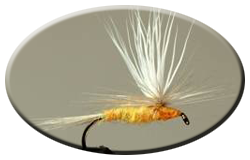
Materials:
- Hook: Mustad #94849 or #94833 Size: 14-18
- Thread: Orange, 6/0
- Tail: Light Blue Dun Hackle Fibers
- Body: Fly-Rite Poly Dubbing, #33 Orange Sulphur
- Wing: White Deer Belly Hair
- Hackle: Light Blue Dun
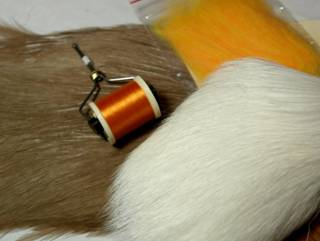
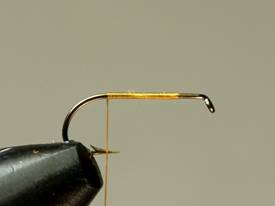
Tie in a good base of Orange, 6/0 thread.
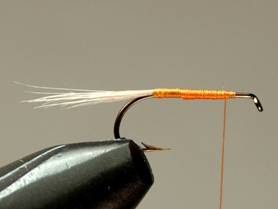
Tie in your tail of light blue dun hackle fibers.
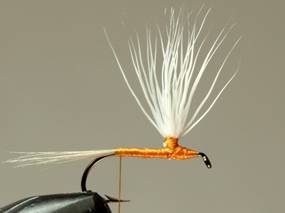
Run your thread forward to the throat position. Tie in your post of White Deer Belly Hair (you may substitute with your own favorite material).
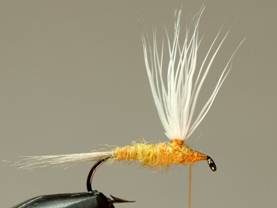
Run your thread back to the hook bend. Add dubbing wax and your Fly-Rite #33 Poly Dubbing. Wrap your dubbing forward to the throat position and tie it off.
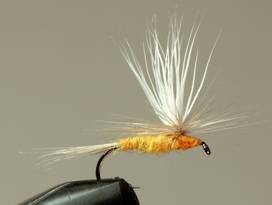
Tie in your Light Blue Dun Hackle. Wrap it parachute style and tie it off. Finish wrapping the head, and add head cement.
Insect color and size will vary from river to river. Food supplies, water temperatures, light conditions, water chemistry and a host of other factors will all play a role in insect color and size. Size and color will even vary from river to river and on large river systems, variations may occur even on the same river. In the case of the dorothea I’ve seen body color variations ranging from white to burnt orange.
This pattern is of sound construction. Varying the body color to ‘match the hatch’ in your neighborhood will only result in more fish in the creel.
See you on the water…..
Tom Deschaine
For more great info, check out:
Beginning Fly Tying | Intermediate Fly Tying | Advanced Fly Tying.
